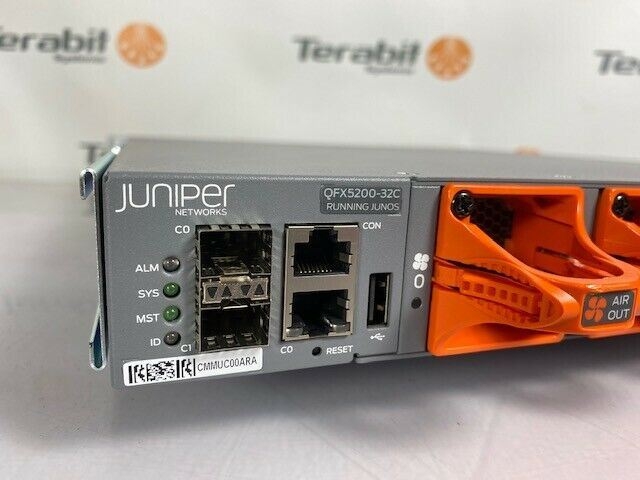Discover the differences: Juniper QFX5200-32C vs QFX5120-32C for 100G leaf switches
Both the Juniper QFX5200-32C and QFX5120-32C are compact (1RU), high-density 100G switches designed for fabric deployments, offering 32 ports of 100GbE, delivering 6.4 Tbps of line-rate switching. They both also support a range of interface speeds, including 10GbE, 25GbE, 40GbE, 50GbE, and 100GbE, providing deployment versatility ideal for leaf switches. Both models support advanced Junos OS features, such as BGP add-path, MPLS, L3 VPN, and Fibre Channel over Ethernet (FCoE).
As you can tell both models have almost identical physical specs at first glance. So what is the difference, you might ask?
CHIPSET
QFX5120 switches are Trident based chipsets which are newer, more powerful, whereas the QFX5200 utilizes the older Tomahawk based chipset. The advantage of the Trident is lower port-to-port latency, as well as L3 EVPN-VXLAN routing functionality. The Tomahawk based model evidently only supports this feature for layer2 traffic.
POWER CONSUMPTION
In terms of power use, small savings can add up with large deployments. The QFX5200-32C has a typical power consumption of 380W, whereas the newer QFX5120-32C has a lower figure of 193W. That being said, their max power rating is much closer with the QFX5200 clocking in at 480W as compared to the QFX5120 which has a ceiling of 473W.
EOS/EOL
The QFX5120 models are newer and thus will be fully supported for a larger window of time before any EOS/EOL (end-of-support / end-of-life) announcements. That may or may not be as important to savvy network operators who leverage cost-savings available on the secondary market and don’t need J-Care support. With that being said, if past history tells us anything, Juniper will continue to ship and support the QFX5200 into the foreseeable future before any sort of EOS announcement so I wouldn’t necessarily make any purchasing decision based on this factor alone.
In conclusion, both switches are well-suited for 100g leaf deployments and really are only differentiated by their chipset and relative age and date of release. You really can’t go wrong with either and I generally help clients determine the best fit based on their desired budget and current market availability.
If you need help making the right decision for your next deployment, at terabit Systems we’re here to help! Reach out via phone at +1 (415) 230-4353 or email and let’s talk.

